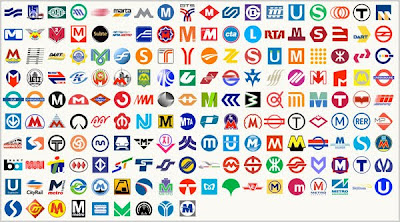Despite millions of dollars invested, bureaucratic tinkering and lots of lip service, Metro's Rail Operations Control Center (ROCC) remains mired in dysfunction, sources say.
The ROCC is Metro's nervous system, its air traffic control system. That this crucial organization remains so prone to safety lapses and basic operational problems should concern riders who value their time and safety when riding Metrorail.
For a chilling example of how ROCC failures can be deadly, just look at the smoke inhalation death of rider Carol Glover.
However, it doesn't seem as if much has changed at ROCC since that horrifying day at L'Enfant. In fact, Metro's ROCC has, as recently as December, sent a passenger train into a tunnel to investigate a report of a fire.
One source, commenting on Metro GM Paul Wiedefeld's repeatedly saying "safety trumps service," said "my behind."
How can this be happening? Perhaps it's because Metro tolerates, and even rewards, poor performance.
On Wednesday August 29, 2018 at 1610 train 914 experienced a mechanical issue (major air leak) in approach to West Falls Church track #1. The total customer delay for this incident was 48 minutes. A line delay of 26 minutes was incurred due to the Central Control Staff failing to initiate single track operations. You did not ensure the continuity of service and, incident resolution and the mitigation of delays. It is your responsibility to ensure that all customer delays are mitigated in the safest and most efficient manner.
On Tuesday August 21, 2018 at 2033 the ROCC lost remote control of field equipment due an RTU issue. ROCC was unable to set routes in the established Single-Track area between McPherson Sq. (C02) and Smithsonian (D02). The required ATC support was not on scene and contributed to the delay. Train 901 held at Farragut West (C03) for 45 minutes. No attempt was made to provide customers an alternate way to get to their destination. Shuttle Bus service was requested from the BOCC and no announcements were made to the customers to advise them that shuttle bus service was available. You did not ensure the continuity of service and the mitigation of customer delays. It is your responsibility to ensure that all delays are mitigated, and incidents are handled efficiently.
On Friday, February 12, 2019 at 1759 train 104 reported a loud banging noise coming from under the train. The Radio Controller advised the operator to continue to Grosvenor to allow Car Maintenance XXXX to board and investigate. The Controllers did not instruct the Operator to perform a ground walk around. As the train entered Grosvenor station, Car equipment XXXX stated “in his nine (9) years of experience he has never heard a train sound like this” Once Car maintenance XXXX boarded, he made a request to cut trucks on 3222 to avoid the possibility of a “drag.” During Car Equipment XXXX inspection and findings there was a separate request for foul time to perform an exterior inspection of the train. Once Car Equipment XXXXX boarded the train and advised the operator to recharge, the Radio Controller in your presence gave the Operator permission to move without verifying it was safe to do so with Car Equipment XXXXX. During the investigation it was also discovered that you were not present on in the ROCC at the start of this incident. You failed to ensure the issue was handled in the safest manner by failing to ensure that the following actions were taken to mitigate the associated risk i.e., offload passengers at the first available station, slow the train by establishing a speed restriction (15mph restricted speed or 25mph reduced speed). Instead, train 104 to operate normal speed while in service with passengers aboard. There were no actions taken to mitigate the safety concerns to include moving car maintenance towards Rockville which is where the mechanical issue was reported and establishing single track operations. There was also a lack of response to safety concerns expressed by Car Equipment XXXXX. CMNT XXXXX requested to perform a ground walk around due to smelling a burning rubber smell. This request was denied. In addition, CMNT requested a 10MPH speed restriction to transport the train to Shady Grove Yard. You instructed the Controllers to ask CMNT XXXXX if it was possible to increase the speed restriction to 15MPH or 20MPH.
Your recent performance regarding your oversight of the Rail Operations Control Center (ROCC) is of great concern to the RTRA/ROCC leadership. As a member of the ROCC’s leadership team, you are expected to assume responsibility for the overall control and coordination of the Rail Operations Control Center. Your recent failure to provide adequate oversight over the Rail Operation Control Center and recent failure to make good decisions during emergencies is a concern for me. As a member of the management team and a Superintendent this failure is unacceptable.
There's more. According to the source, this superintendent remains on the job at ROCC.
And it gets worse: According to two sources, an extremely toxic work environment makes it very hard to hire and retain good workers. Both say the reason for this starts at the top of ROCC.
According to one source, the leader of the ROCC is:
"Another WMATA lifer. They built a team based on personal friendships, not by actual talent. Consistently he and his team are being investigated for sexual harassment and inappropriate behavior. This is why people from the outside do not stay. They are targeted and hazed by the existing folks. They see that the managers are not held accountable."
"The experience level in the control center has dropped significantly. The average [controller] has less than 3 years," the source said. "The [low] morale and culture will be its downfall. It’s sad when ROCC has 30 something controllers and 30 controllers trying to leave."
Metro has tried to throw money at the problem, offering a one-time $5,000 bonus for new controllers when they get certified and $4,000 per year afterward, sources said. There's a stipulation, however, sources said: New employees must stay three years, or they have to pay back the bonuses. Some left despite the penalties, sources said. The salaries for controllers are $80,000 and up, with some advocating to make the base $100,000.
Hiring got so difficult that Metro started to bring back retired controllers, a source said. That didn't work out well as they, too, clashed with the toxic culture.
Another effort to improve ROCC was to increase staff, but according to one source:
"Promoting [and] adding multiple new management positions took competent controllers and made them managers. You now have new managers in a role that needed to be groomed and mentored. To replace the newly promoted managers you have to recruit controllers. So basically you contributed to the controller deficit that you are mandated by the FTA to resolve. So from a controller perspective you are surrounded by new managers and new controllers you do not have any guidance in the room."Until Metro can get a handle on what's going on at ROCC, riders can continue to expect delays and unsafe operating practices.
"ROCC should be the best of Metro, and it's not," one source said.







































 Oct. 11, 2012
Oct. 11, 2012 February 21, 2012
February 21, 2012 March 4, 2010
March 4, 2010




